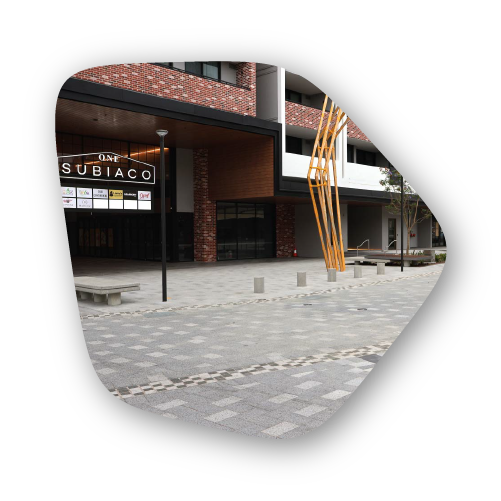
Essential Tips for Choosing the Right Pavers for Your Home
When it comes to enhancing your outdoor spaces, selecting the right pavers in Perth can make all the difference. From driveways to patios and pool surrounds, the right pavers elevate your home’s aesthetic and offer durability and functionality. This guide will help you make an informed decision.
What Are Stone Pavers?
Stone pavers are flat, durable pieces of natural stone used to create outdoor surfaces such as patios, walkways, driveways, and pool surrounds. Cut from materials like sandstone, granite, bluestone, or travertine, these pavers offer a timeless, organic look that blends beautifully with Australian landscapes. Known for their strength, slip resistance, and aesthetic appeal, stone pavers are a popular choice for homeowners wanting a stylish yet long-lasting solution for outdoor areas. So here are some essential tips to make sure your pavers are the best for your home:
1. Consider the Purpose of the Area
- Driveways need strong, durable pavers that can handle the weight of vehicles. Concrete and clay pavers are great options due to their strength and longevity.
- Patios and entertaining areas require comfort underfoot and an inviting look. Natural stone or large-format pavers in neutral tones often work beautifully.
- Garden paths or stepping stones may benefit from a more rustic look with irregular shapes or textured surfaces for slip resistance.
- Pool surrounds demand non-slip, salt-resistant materials like travertine, porcelain, or specific textured concrete pavers.
Understanding the intended use of the area will help narrow down suitable materials and finishes, ensuring safety, durability, and long-term performance.
2. Think About Climate and Conditions
Australia’s diverse climate means that different areas will have different paving requirements. In regions with intense sun, opt for light-coloured pavers that reflect heat rather than absorbing it, keeping surfaces cooler underfoot. For coastal homes, choose materials that resist salt damage and corrosion, such as porcelain or sealed natural stone. In areas prone to heavy rain or where slip hazards are a concern, look for pavers with a textured, non-slip finish. Drainage is also a key consideration—ensure proper grading and use permeable pavers where appropriate to avoid water pooling.
3. Match the Style of Your Home
Pavers are a major design element, so it’s important they complement the overall aesthetic of your home. Take cues from your existing architecture, roofing, cladding, and even your landscaping.
- Modern homes suit sleek, large-format pavers in minimalist colours like grey, charcoal or white.
- Traditional or heritage-style homes pair well with warm-toned clay bricks or natural stones like sandstone.
- Coastal or Hamptons-inspired homes benefit from soft tones such as limestone, light travertine, or white-washed concrete options.
If in doubt, bring home samples to see how they look against your exterior materials and in different lighting conditions.
4. Choose the Right Material
Each paving material has its own pros and cons. Here’s a quick breakdown of the most popular options:
- Concrete Pavers: Affordable, versatile, and available in a wide range of colours and textures. Suitable for almost all outdoor applications, including driveways, patios, and paths, but may require sealing and can fade over time if not maintained.
- Natural Stone: Options like sandstone, bluestone, granite, and travertine offer timeless beauty and durability. They’re ideal for high-end applications and add value to your home, but they can be more expensive and may need sealing for stain and slip protection.
- Clay Pavers: Made from natural clay and fired at high temperatures, these pavers are incredibly durable and retain their colour over time. They offer a classic look and are great for driveways and walkways.
- Porcelain: These high-density, non-porous pavers are growing in popularity due to their stain resistance, low maintenance, and modern appearance. Ideal for pool areas, patios, and outdoor kitchens, though they can be more expensive and require a solid base for installation.
- Recycled or Eco-Friendly Options: Sustainable choices like recycled bricks, permeable pavers, or reconstituted stone reduce your carbon footprint and often come with a unique aesthetic.
5. Prioritise Safety and Comfort
For any area that will see frequent foot traffic, especially by children or the elderly, safety should be a top concern.
- Look for non-slip finishes, especially around pools, pathways, and outdoor entertaining areas.
- Ensure pavers are even and level, minimising trip hazards.
- Consider heat absorption, particularly for barefoot areas like pool decks. Some materials retain more heat than others and can become uncomfortably hot
- Think about maintenance. Some surfaces show dirt and stains more easily, while others require sealing to protect from the elements.
6. Don’t Overlook Colour and Texture
The colour and texture of your pavers can set the tone for your entire outdoor space.
- Neutral tones like beige, grey, and taupe are timeless and versatile.
- Bold colours can add drama and visual interest but may date more quickly or clash with other elements.
- Textured surfaces offer grip and visual depth, while smooth finishes look sleek but may be slippery when wet.
Darker pavers can show dust and debris more, while lighter ones may stain more easily. Always balance aesthetic preference with practical considerations.
6. Don’t Overlook Colour and Texture
Installing pavers in Perth isn’t just about buying the product—it’s also about labour, base preparation, edging, drainage, and sealing (if needed). Decide early on whether you’ll DIY or hire professionals. While some small paths or patios might be manageable for a handy homeowner, driveways or intricate designs usually require expert installation to ensure durability and proper drainage.
Factor in:
- Labour costs
- Base materials (sand, crushed rock, etc.)
- Edging and borders
- Sealing and maintenance products
- Ongoing upkeep
Set a realistic budget that includes these extras so there are no nasty surprises down the line.
8. Think Long-Term
Trends come and go, but your paving will (hopefully) be there for years, even decades. Choose a style that you’ll still love in the long term and that will appeal to future buyers if you ever decide to sell. Invest in quality materials and proper installation—it might cost more upfront, but it will save money and headaches later on.
Final Summary
- Purpose: Choose pavers based on area use (e.g. driveways, patios, pools).
- Climate: Match materials to local conditions (e.g. heat, rain, salt).
- Style: Complement your home’s architecture and landscape.
- Material: Pick from concrete, stone, clay, porcelain, or eco-friendly options.
- Safety: Ensure non-slip, even surfaces—especially in high-traffic or wet areas.
- Colour/Texture: Balance aesthetics with practicality (e.g. light vs dark, smooth vs textured).
- Budget: Account for all installation and maintenance costs.
- Longevity: Invest in quality and timeless designs for lasting appeal.
Choosing the right pavers for your home is a balance of practicality, style, and long-term value. By considering how the space will be used, your local climate, and the overall look you’re aiming for, you can create outdoor areas that are not only functional but truly beautiful. Whether you’re after a modern, minimalist vibe or a timeless natural finish, the right pavers will elevate your space for years to come.
Ready to dive deeper?
Explore more paving tips, inspiration, and expert advice in our other blog posts below.
To get the best pavers to match your house, GET A FREE QUOTE for your pavers.






